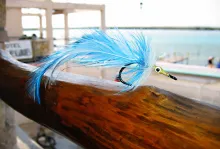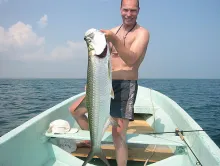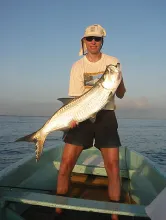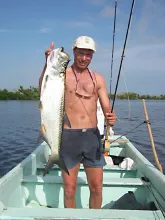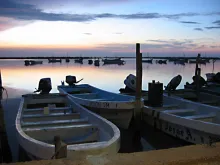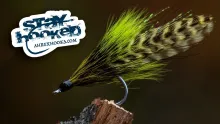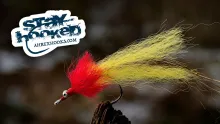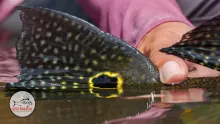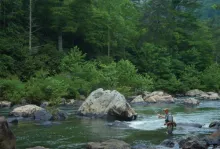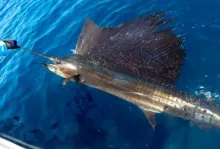You need luck, a good guide and skills to catch a tarpon. We can't supply the luck. You'll have to go there to get a good guide. The skill... well, you'll have to hone that yourself. But a good fly pattern, that's something we can help with.
During my most recent tarpon trip to Mexico I had little luck with the large members of the species. I caught plenty babies, but no biggies.
Opposite Lars Mathiessen. Lars had good luck... ehr... showed excellent skill with the big ones and was by far the angler in the company who hooked and landed most large tarpon in the open ocean. He also did fine on the babies, but with the big fish in the ocean he severely outfished the rest of us.
Now it might have been luck. It might also have been a good guide. It is more likely to have been skill. And it might have been the fly. A combination is probably the right answer.
What I can supply
Now I can't supply the luck.
The guide—Carlos—is still in Rio Lagartos and you'll have to go there to get him.
The skill... well, you'll have to hone that yourself.
But the fly pattern, that's something I can help with. First of all because Lars was very open about the fly and opened his box to us during our afternoon rhum-on-the-porch sessions, and secondly because it's a fairly simple and generic pattern.
I have baptised the fly La Muerte because I nicknamed Lars "El Muerte" during our stay. Since the gramatically correct way to say this is "La Muerte", this is now my name for the fly. Lars earned this honorable name because he rubbed a very dense, white sunscreen on his skin every day, which left him looking quite ghost-like.
The fly is a variation of the classical splayed feather-tail tarpon fly as found in many patterns devised by many different tiers. Splayed tail, a couple of hackles and a long snout. Much like the Splayed Alive Pike Fly actually.
The tying instructions are uncomplicated and most people would easily be able to fill their boxes with this pattern. Lars used nothing else, so you can trust that it works. He had luck with the blue and white flies, but also had some red and white ones in his box.
As the originator Lars Mathiessen notes in his mail to me about the fly: "Finish the fly with good sprinkle of luck. You will need that if you want to catch a tarpon - even with this fly"
- Log in to post comments

